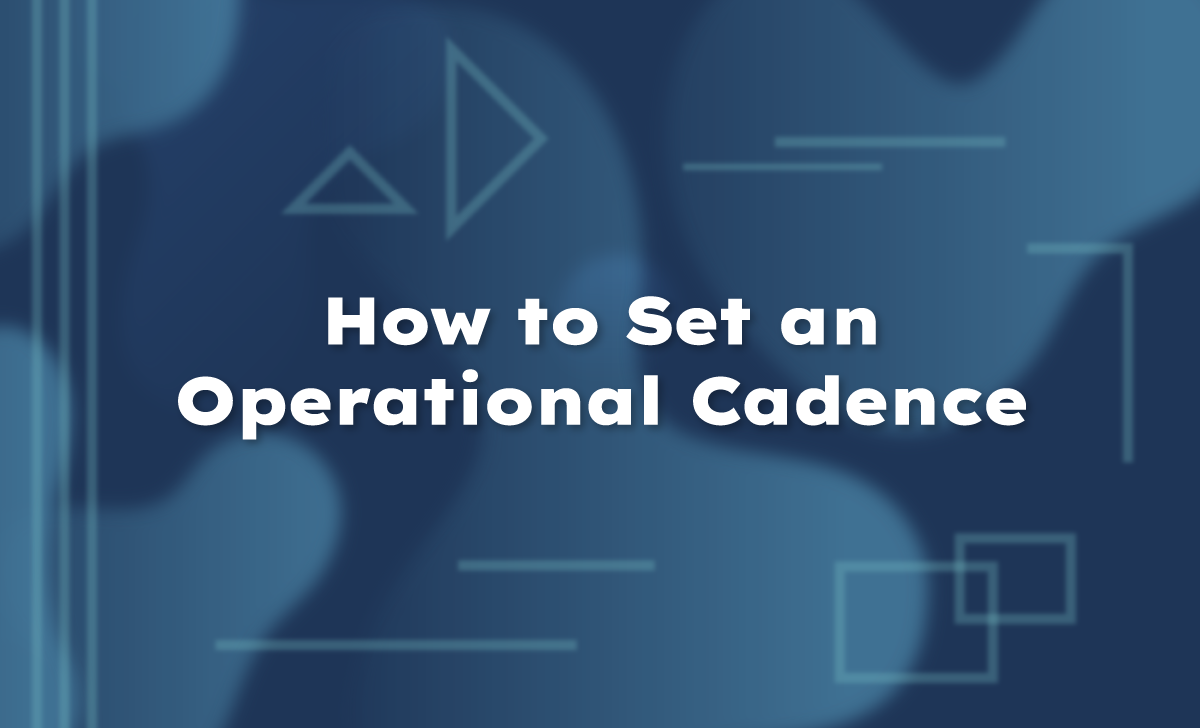How to Set an Operational Cadence
An operational cadence is a blueprint for everything that happens at your company over the course of a year. Once you understand your cadence, you can coordinate the flow of the whole company.

My favorite days at Upwave were the Fridays that coincided with the last day of the quarter. My team would list every survey we wanted to close that day on a whiteboard and cheer as we erased each one. There was a hard stop at 5pm for our all-hands meetings, so adrenaline was high as we raced to the finish line together. Did it actually matter if we completed every survey before the quarter ended? Not at all. But the artificial pressure was worth those brief moments of celebration and closure.
As Q1 comes to a close and spring is just getting started, I’m yearning for both fresh goals and for endings. Working remotely can be monotonous, and because I let work bleed into all hours of the day, I have a hard time ever feeling done. How can I recreate deadlines for myself to stay inspired? And how can we build those patterns into the rhythm of the company itself? The answer is operational cadencing.
What Is an Operational Cadence?
An operational cadence is a blueprint for everything that happens at your company over the course of a year, such as engineering sprints, offsites, and employee reviews. Once you understand your cadence, you can coordinate the flow of the whole company.
When done right, the efforts of one department should directly contribute to the others, such as creating marketing buzz right after a big product release, which in turn creates a spike in sales. And that kind of energy gives the team momentum to keep going.
Why Do You Need an Operating Rhythm?
If you don’t know what you need to fit into your year, how will you make it happen? By putting your biggest priorities on the calendar first and synchronizing everything else around those, you can rest assured that both the rocks and the pebbles will fit into your jar of time.
Predictability. Mapping out your schedule helps forecast your biggest revenue spikes and peak spending periods. Especially in the early stages, cash flow can be crucial, and investors will understandably push for predictable revenue. Once you grasp your cadence, you can better align your reporting (and maybe even schedule board meetings more favorably!).
Productivity. Pushing your team before a big deadline? Sprints are a great way to do that, particularly because there’s a clear goal and end date. By building in periods of hustling followed by breaks, employees can better find their groove knowing what’s coming.
Culture. How quickly does your team move? How much time do you spend in meetings? How often do you see one another? These are all defined by your operational cadence, too. Appropriately choreographing the company schedule lets employees know what is most important to the team. Signal your values early on by ensuring time is spent on what really matters.
Establishing Your Cadence
1. Start with your goals
To decide on the journey, first pick the destination. Annual goals and other critical priorities should be the core piece of what your operational cadence revolves around. By setting checkpoints and quarterly goals, you can back into what needs to be done to hit each one along the way.
2. Drop in your building blocks
You guessed it - meetings! Take inventory of how and why your team meets and decide whether each meeting cadence still feels appropriate. Should it actually be a meeting or can it be an email?

Courtesy of Unleashed Technologies
How employees spend their days and weeks ultimately defines their experience at the company, as meetings directly impact productivity and happiness. It’s worth making the effort to more carefully allocate company time. Here’s a great cheat sheet on meeting types and ideal frequencies.
3. Understand your cycles
Just as the seasons change, it’s natural to have ebb and flow in your business. Each industry will have its own crunch times and knowing these upfront will allow you to build in periods of review and reflection. Without space to consider what could go better next time, it's hard to keep pushing on the flywheel.
If work has been feeling like a slog lately, consider how you can add cadencing to your company or team. It's worth the celebration at the end of the imaginary deadline.